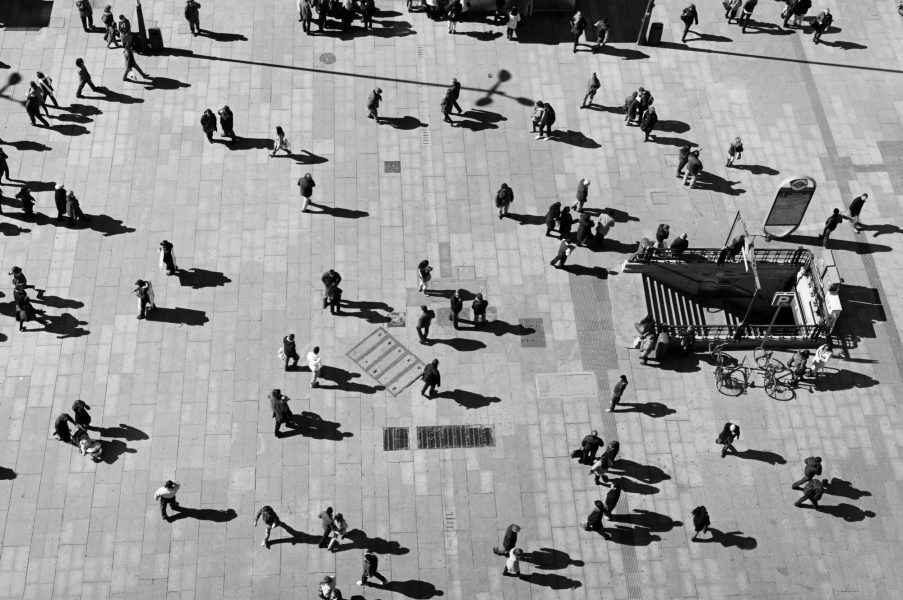18 September 2023
for Madrid Nuevo Norte

Urban mobility and its evolution have had a fundamental impact on the development of cities, from ancient times to the present. This is one of the conclusions of the article by the American urban-planner, Jonathan English published by Bloomberg City Lab, a meeting place to muse on the future of cities. The article points out that, since antiquity, technological advances and new modes of transport have shaped the way people move in and around cities, and have altered the size and morphology of urban areas which historically grew in parallel with urban mobility, as residents evolved from moving on foot, to horseback, railroad, bicycle, streetcar, subway and, ultimately, car. According to the author, this last mode of transport has made the exponential growth of inhabited areas unsustainable and it is now time to rethink the model we want for the future.
Each era of urban mobility has prompted changes in city design, housing patterns, and the relationship between urban centres and outlying areas.
According to the author, technology has shaped the cities we inhabit today, based on a single premise: throughout history, people have been willing to travel roughly 30 minutes each day to reach their destination—largely, from home to work and vice versa—a phenomenon studied in 1994 by the Italian physicist Cesare Marchetti, which became known as the Marchetti Constant.
To follow are the key factors contributing to the joint evolution of transport and urban growth over the ages:
From antiquity until the Industrial Revolution, walking was the primary means of transport. The radius of development from the city centre was limited to roughly one mile (1.6 km), about the distance a person could walk in 30 minutes, a constant that held from Imperial Rome to 18th-century Paris and London. Consequently, cities did not grow significantly beyond a 2-mile diameter during this period, leading to the further densification of cities.
The introduction of steam-powered pubic railways revolutionised transportation in the 19th century. Steam trains allowed for faster long-distance travel, but their limited frequency and high cost restricted access to only the very wealthy. Prosperous railway suburbs cropped up around train stations, serving the middle and upper classes, as was the case with the Main Line suburbs in Philadelphia.
The invention of bicycles and electric streetcars provided new means of transport to the urban masses. The bicycle offered greater speed and mobility within cities, while the streetcar expanded the area accessible to city residents. As a result, streetcar suburbs of single-family and semi-detached homes developed, expanding the reach of the middle class. At the time, however, Europe maintained a more compact design than their North American counterparts due to slower adoption of the trolley.
Facing overpopulation, London pioneered the concept of the underground tube system. After the introduction of steam trains, electric trains were adopted, creating the iconic London Underground. In the United States, numerous elevated trains were built along city streets, allowing for the development of new areas and urban expansion. Both elevated trains and subways meant that the working class could live further from the city centre for the first time, and still maintain reasonable commute times.
The arrival of affordable automobiles and the construction of expressways transformed urban mobility. Initially considered a luxury, cars had become more accessible with the mass production of options like the Ford Model T. The idea of dispersing the population into car-oriented suburbs gained popularity, leading to the expansion of suburban areas and the emergence of urban sprawl. This phenomenon, which originated in the United States, eventually spread to Europe. Expressways increasingly enabled long-distance commutes and affordable housing extended to previously undeveloped areas.
In his article, Jonathan English concludes his analysis with a vision for the future. Do we want to continue this endless growth trend? Congested highways, traffic jams, increasingly longer commute times, and unsustainable environmental costs are just some of the consequences of the mass adoption of this model. Though telecommuting and the vast expansion of public transit networks could be viable solutions, the author argues that they are not devoid of problems, including the lack of socialisation, employers’ scepticism of the former, and the maintenance costs of the latter. In light of these factors, English concludes that “[t]he best option is to densify our cities”.
The ideas of the article are fully compatible with those of Madrid Nuevo Norte, the first major development in Spain with a public transit-based design, known as TOD, Transport Oriented Development. Through its design, rather than expand the city, Madrid’s urban transformation project opts to convert presently degraded and disused land into a dense, compact urban environment. The design combines the concepts of the 15-minute city for daily commutes (halving the Marchetti Constant) and the 45-minute region, thanks to a new public transport network centred at Chamartín – Clara Campoamor statin. The station, slated for full renovation, will become a first-rate mobility hub, functioning as the country’s main high-speed rail centre while also covering local and regional routes.